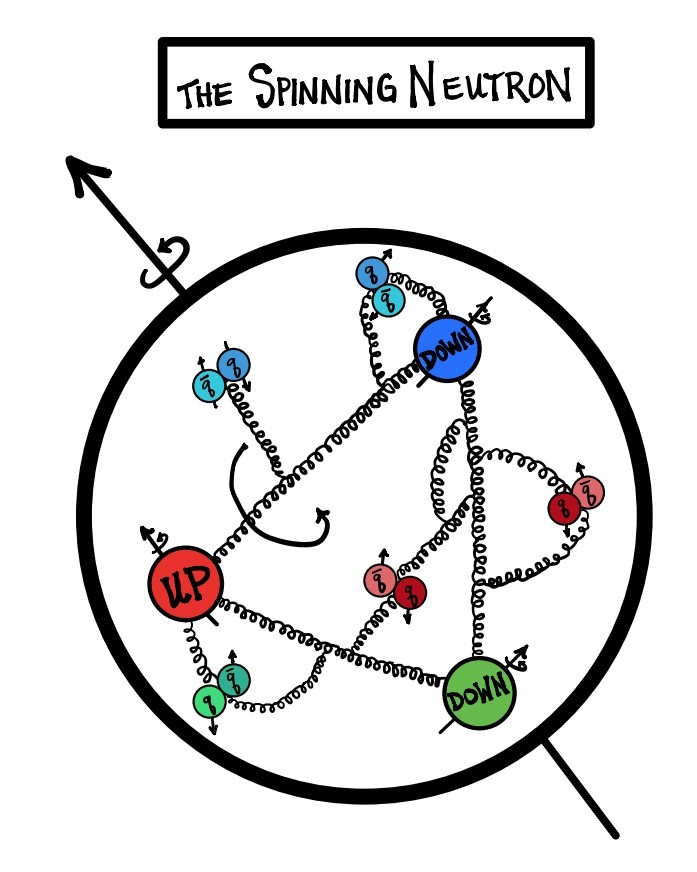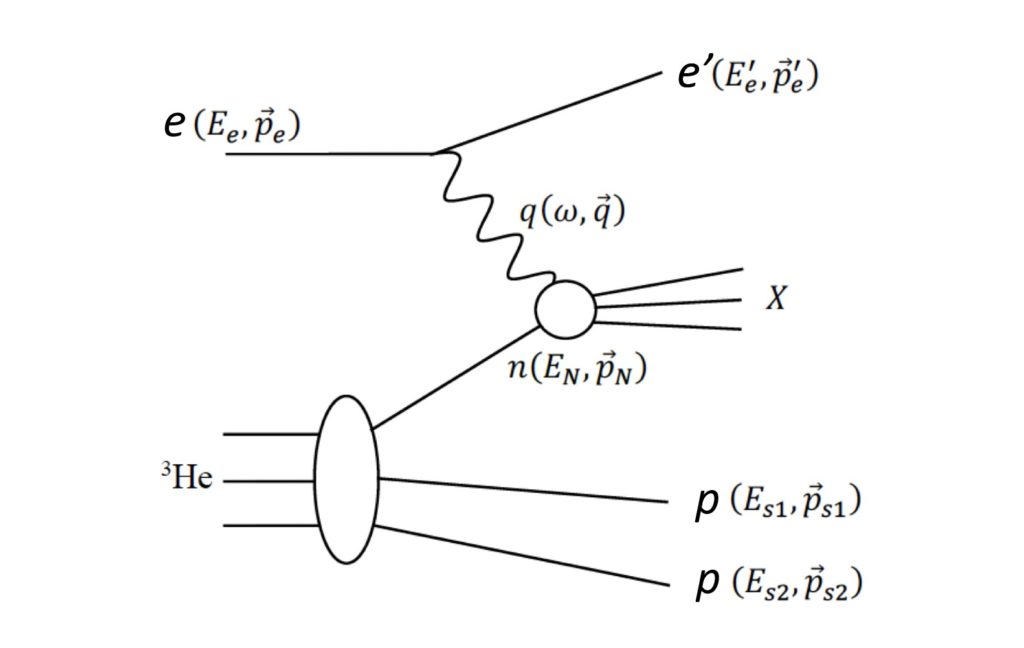The building blocks of matter, protons, and neutrons, are made of quarks and held together by gluons. (See Figure 1.) Each of these objects – quarks, gluons, protons, and neutrons – has spin. Quarks and gluons have an internal spin, with values of 1/2 and 1 in particle physics units. They can also orbit around each other – this type of spin is called orbital angular momentum and has integer values – 1, 2, etc. Protons and neutrons are very complicated objects in one sense – they are made of 3 “valence” quarks – quarks that set the quantum identifiers of the nucleon – as well as a sea of quark-antiquark pairs and gluons. All of it spinning in a variety of ways. From the outside, however, protons and neutrons are very simple spin-1/2 objects and so a fundamental question is how do they get their spin? How do they end up with spin-1/2 when they contain within themselves any number of spin-1 and spin-1/2 objects, which may also be spinning around each other? This is a question for theorists and experimentalists at the future Electron-Ion Collider (EIC) accelerator.
Recently, a team from the Berkeley Lab, Jefferson Lab, Brookhaven, MIT, and industry laid out a roadmap [1] for discovering the spin structure of the neutron by probing it with an electron beam. Oddly enough, the key to this work is making sure we know that the neutron is the target of the probe. Why is it so hard to know that we probed a neutron with the electron beam? Because building a pure neutron target is not easy. Free neutrons have a half-life of about 15 minutes so any bottle of neutrons left alone in the laboratory will be gone quickly. We need to stabilize the neutrons in order to keep them longer. This is done in Nature by combining neutrons with protons – i.e., by binding them in a nucleus such as helium-3.
The team’s roadmap proposes to do an EIC experiment using helium-3 as the target because helium-3 contains two protons and one neutron and, most importantly, the neutron is accessible and stable. By putting silicon detectors (nicknamed “Roman Pots”) very close to the axis of the beam, the team will be able to detect the protons kicked out of the helium nucleus. (See Figure 2). So, when two simultaneous protons are detected coming from the target (called “double-spectator tagging”), the team will know that the neutron was hit. It is a very simple and effective technique. From this knowledge, a set of spin observables can be measured to obtain the valence quark contribution to the neutron’s spin that is 3 to 10 times more precise than our best experiments to date. If the experiment can be successfully carried out, then we will be taking a mighty leap forward in understanding how the neutron gets its spin.
Jennifer Rittenhouse West from the Nuclear Theory group in NSD was the principal theorist on this work.
[1] I. Friscic et al., Physics Letters B, Volume 823, 10 December 2021, 136726

